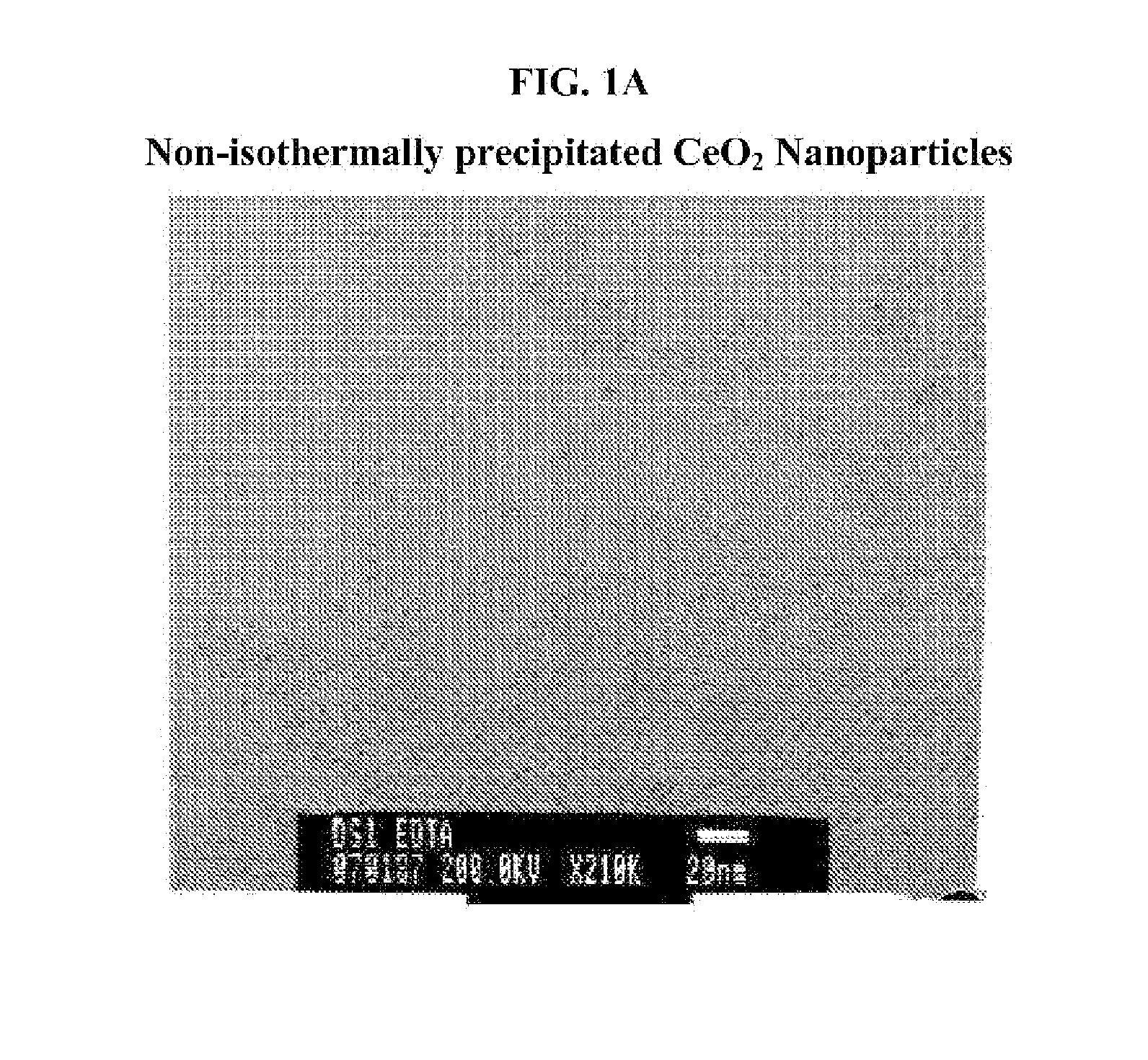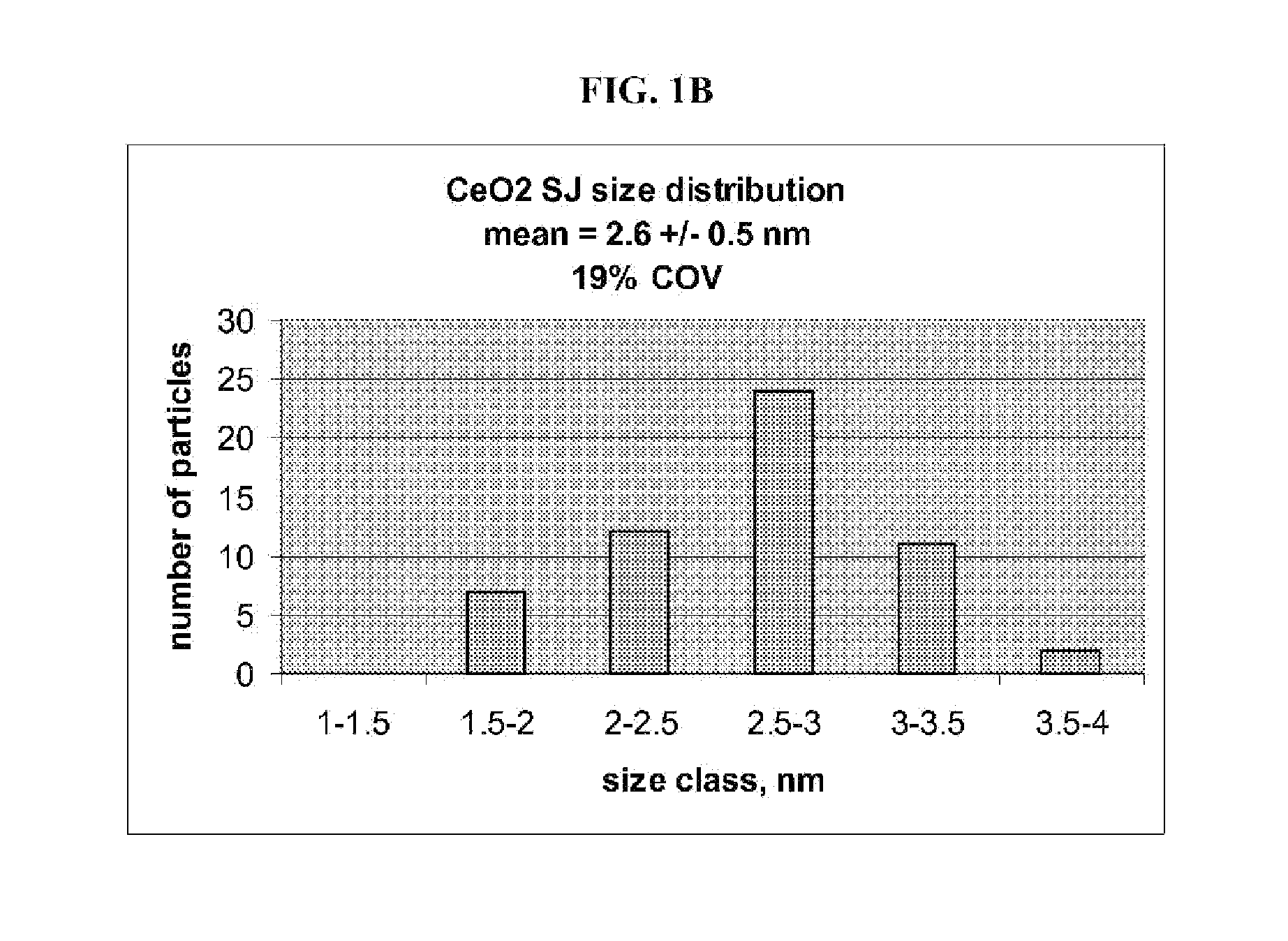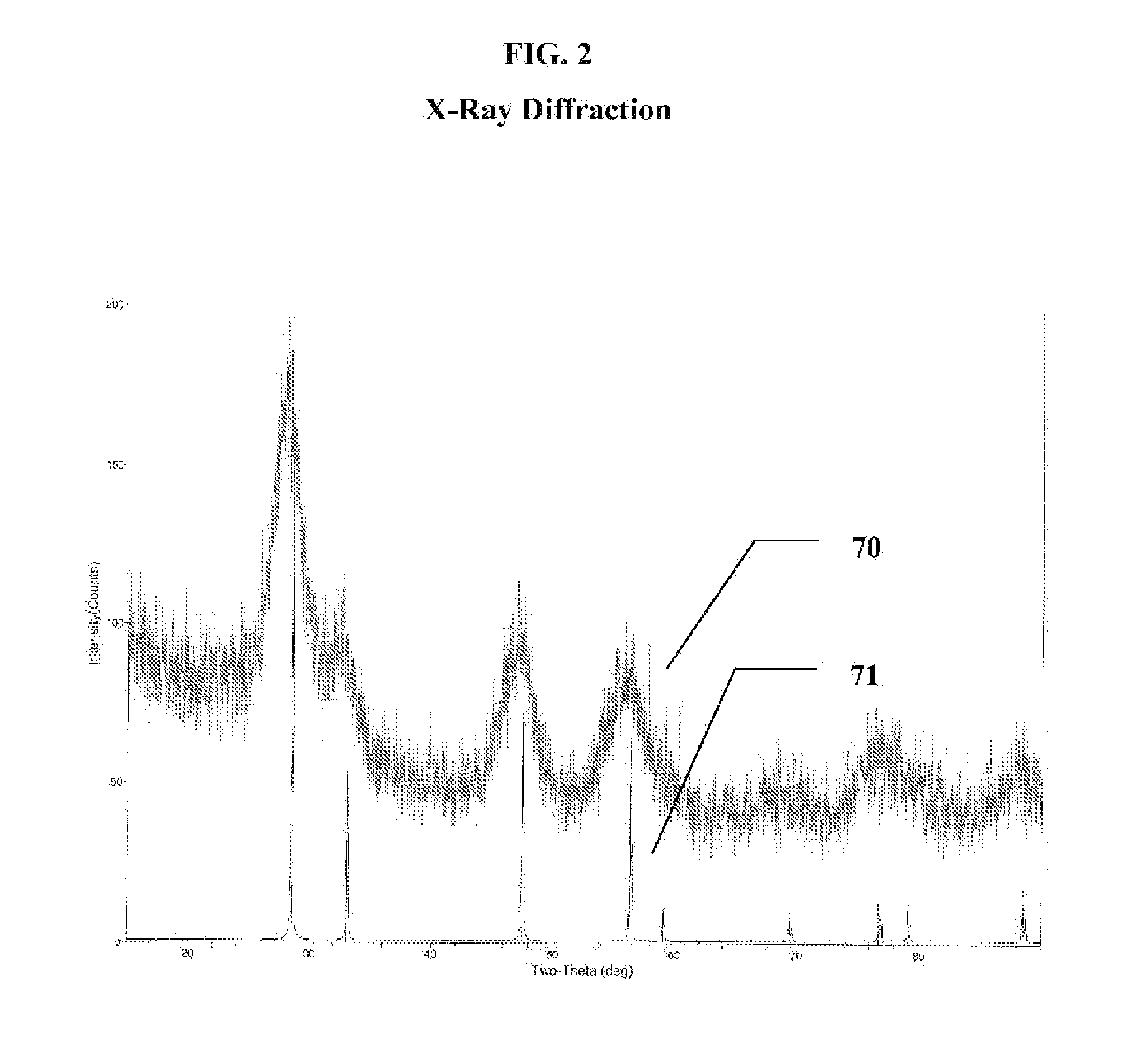Fuel additive containing lattice engineered cerium dioxide nanoparticles
a technology of cerium dioxide nanoparticles and fuel additives, which is applied in the direction of catalyst activation/preparation, metal/metal-oxide/metal-hydroxide catalysts, physical/chemical process catalysts, etc., can solve the problems of accelerating engine aging, and insufficient to reduce engine timing delay
- Summary
- Abstract
- Description
- Claims
- Application Information
AI Technical Summary
Benefits of technology
Problems solved by technology
Method used
Image
Examples
example 1
Preparation of Cerium Dioxide Nanoparticles by Single-Jet Addition
[0175]To a 3 liter round bottom stainless steel reactor vessel was added 1.267 liters of distilled water, followed by 100 ml of Ce(NO3)3.6H2O solution (600 gm / liter Ce(NO3)3.6H2O). The solution was clear and had a pH of 4.2 at 20° C. Subsequently, 30.5 gm of 2-[2-(2-methoxyethoxy)ethoxy]acetic acid (MEEA) was added to the vessel. The solution remained clear, and the pH was 2.8 at 20° C. A high sheer mixer, a colloid mill manufactured by Silverson Machines, Inc. that had been modified to enable reactants to be introduced directly into the mixer blades by way of a peristaltic tubing pump, was lowered into the reactor vessel, the mixer head being positioned slightly above the bottom of the reactor vessel. The mixer was set to 5,000 rpm, and 8.0 gm of 30% H2O2 was added to the reactor vessel. Then 16 ml of 28%-30% NH4OH, diluted to 40 ml, was pumped into the reactor vessel by way of the mixer head in about 12 seconds. The...
example 2
Precipitation of ˜1.5 nm CeO2 Nanoparticles
[0179]This precipitation follows Example 1, except that the stabilizer combination of EDTA and lactic acid in the ratio 20:80 and at a level of 76.4 gm EDTA disodium salt and 74.0 gm of 85% lactic acid is used instead of the MEEA stabilizer FIG. 3A is a high magnification TEM indicating a grain size substantially smaller than 5 nm and estimated to be 1.1+ / −0.3 nm. FIG. 3B represents the electron diffraction pattern of a representative sample of the precipitation. FIG. 3C contains Table I in which the intensities of the various diffractions rings {311}, {220}, {200} and {111} are analyzed within the framework of: cubic CeO2, cubic and hexagonal Ce2O3 and Ce(OH)3. Clearly the percent deviations of analyzed ring intensity with crystal habit are minimal for the cubic fluorite structure of CeO2, thus establishing the existence of this polymorph down to this grain diameter.
example 3
Preparation of CeO2 Nanoparticles by Isothermal Double-Jet Precipitation CeO2
[0180]To a 3 liter round bottom stainless steel reactor vessel was added 1117 grams of distilled water. A standard Rv 100 propeller was lowered into the reactor vessel, and the mixer head was positioned slightly above the bottom of the reactor vessel. The mixer was set to 700 rpm, and the reactor was brought to a temperature of about 70° C. Then 59.8 grams (98%) of methoxyacetic acid were added to the reactor. A double jet precipitation was conducted over a period of five minutes by pumping a 250 ml solution containing 120.0 grams of Ce(NO3)3.6H2O into the reactor concurrently with a solution containing 69.5 grams (28-30%) of ammonium hydroxide. A distilled water chase into the reactor cleared the reactant lines of residual materials. Then 10.2 grams of 50% non-stabilized hydrogen peroxide was added to the reactor and its contents over a period of 40 seconds. Initially, the reaction mixture was an opaque d...
PUM
| Property | Measurement | Unit |
|---|---|---|
| Temperature | aaaaa | aaaaa |
| Temperature | aaaaa | aaaaa |
| Temperature | aaaaa | aaaaa |
Abstract
Description
Claims
Application Information
 Login to View More
Login to View More - R&D
- Intellectual Property
- Life Sciences
- Materials
- Tech Scout
- Unparalleled Data Quality
- Higher Quality Content
- 60% Fewer Hallucinations
Browse by: Latest US Patents, China's latest patents, Technical Efficacy Thesaurus, Application Domain, Technology Topic, Popular Technical Reports.
© 2025 PatSnap. All rights reserved.Legal|Privacy policy|Modern Slavery Act Transparency Statement|Sitemap|About US| Contact US: help@patsnap.com



